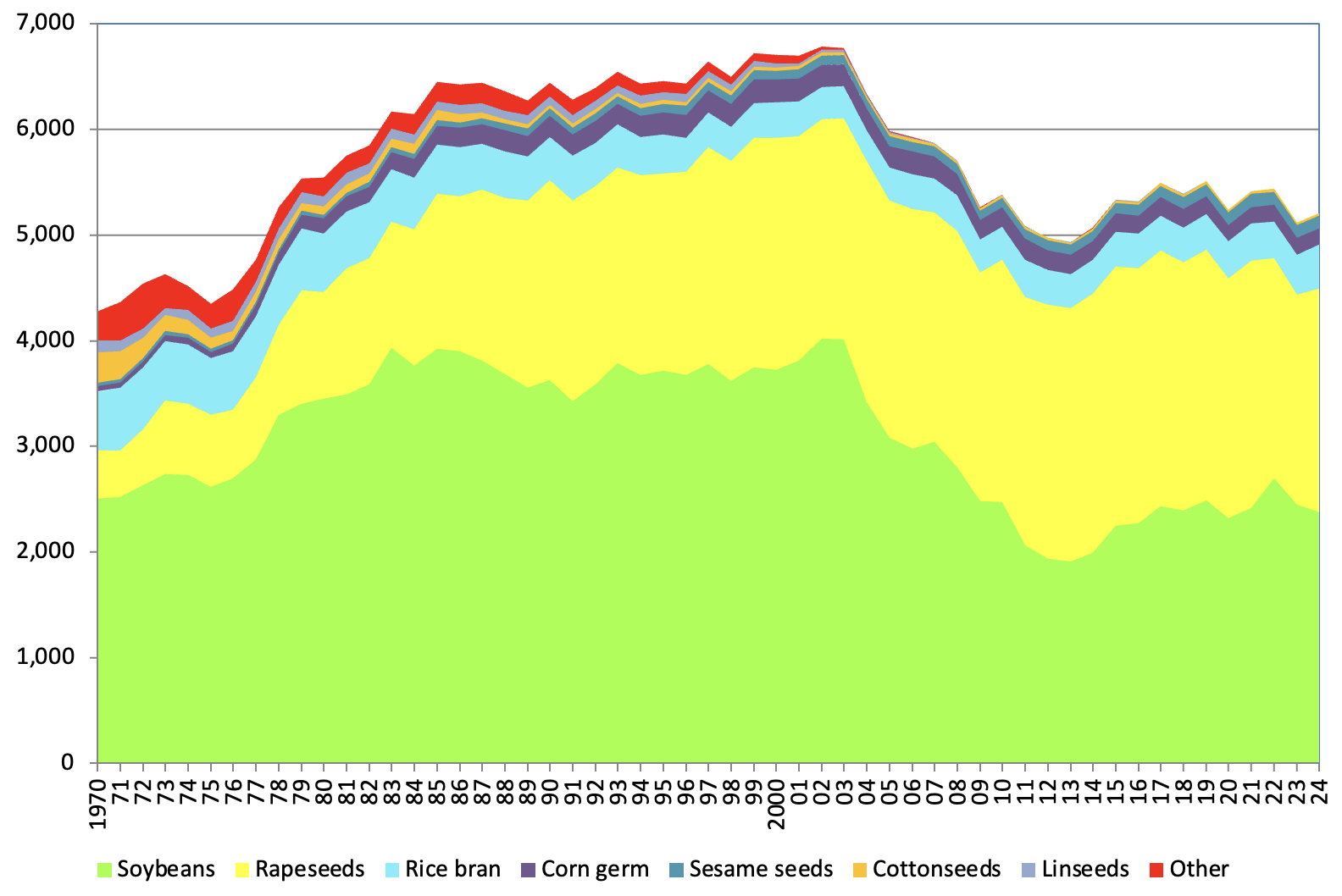The Japanese oil-manufacturing industry processed (expressed) a wide variety of oilseeds and other raw materials prior to the 1970s. However, from the perspective of increasing efficiency, expression of raw materials which provide a small quantity of oil gradually decreased. Figure 19 shows changes in the amount of oil expressed for raw materials since 1970. Until the early 1970s, there was a significant amount of oil expressed from "other" materials, but this amount has gradually decreased since then. Although Japan now depends on imports of crude oil for safflower seeds, sunflower seeds, palm kernels, and copra (raw material for coconut oil), we used to express a large amount of oil from these and a variety of other materials until the early 1970s. However, the Japan stopped expressing these materials and began to depend on the import of crude oil. These conditions still exist today. The amount of oil expressed from raw materials peaked in 2002 and has decreased since 2003. This is due to a significant decline in the amount of soybeans expressed.
The amount of oil expressed from soybeans remained constant at around 3.5 million tons from the late 1980s until 2000. However, in 2001, the first case of mad cow disease (BSE) was discovered in Japan. The epidemic was traced to the feeding of meat-and-bone meal (MBM) and the use of MBM was prohibited. Consequently, there was a rapid increase in demand for soybean meal as an alternative protein feed to MBM. This caused a temporary increase in the amount of soybeans expressed. Afterwards, the amount declined due to continued poor profitability for expression. In 2011, the amount of oil expressed from soybeans was surpassed by that of rapeseed. Then, in conjunction with subsequent changes in profitability, the amount of soybeans expressed started to recover and increase from 2014. In recent years, the soybean expression amount is at the same level as rapeseed expression. However, in 2022, the soybean expression amount increased due to the impact of rising prices caused by a poor rapeseed harvest. In 2023, consumption of vegetable oil decreased due to the increase in product prices caused by increased costs. This caused a decrease in the amount of oil pressed from both soybeans and rapeseed. In 2024, consumption of rapeseed oil recovered partly due to increased demand associated with inbound tourism, and there are signs of recovery in rapeseed oil pressing.
The amount of expression has also decreased for rice bran, the only domestically-produced material. This was due to a decrease of rice bran generated in conjunction with a fall in rice production. However, demand recovered in the 2010. In recent years, health consciousness has caused a further increase in demand for rice bran oil and the amount of oil extraction has increased. Although demand had plateaued due to a shortage of rice bran, demand began to increase in 2023 and 2024.
Figure 19: Changes in the amount of material processed (expressed) for vegetable oil in Japan
(Unit: 1,000 tons)

Source: Survey on Oil Production Results (MAFF)
Note: "Other" contains safflower seeds, sunflower seeds, peanuts, palm kernels, copra, and linseeds.




